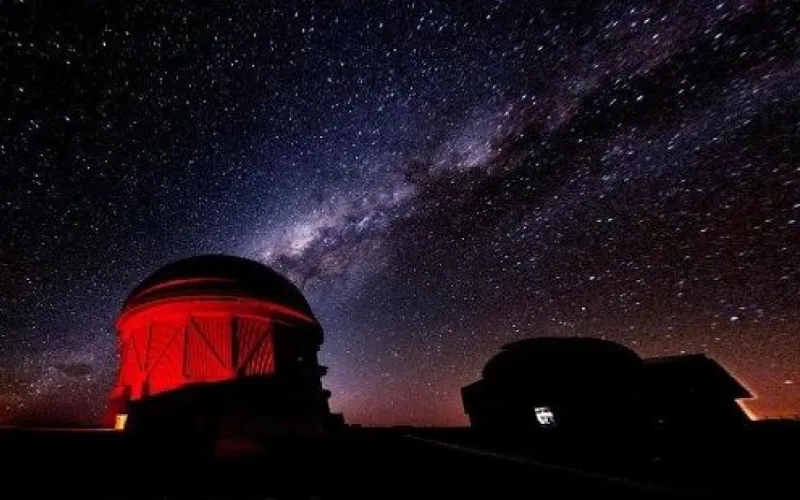Foundation Astrophysics : FAP 100
8 Weeks, Self Paced
Verified & Standard Mode
Foundation Astrophysics FAP100 is designed to introduce beginners to the wonders of astrophysics. Through a blend of theoretical lessons, hands-on virtual activities, and discussions on modern astrophysical research, students will build a foundational understanding of the universe. No prerequisites are required—just curiosity and an eagerness to learn!

Tentative Course Structure
Week 1: Welcome to the Cosmos
- Topics:
- What is Astrophysics? Defining the field and its role in understanding the universe.
- The history of astronomy: from ancient civilizations to the space age.
- The interdisciplinary nature of astrophysics, connecting with physics, chemistry, and mathematics.
- Objectives:
- Gain a clear understanding of astrophysics and its significance.
- Recognize major historical milestones in astronomy.
- Understand how astrophysics fits within broader scientific exploration.
- Activities:
- Watch an introductory documentary on the “Evolution of Astronomy.”
- Reflective discussion: “What would you most like to discover about the universe?”
Week 2: Navigating the Night Sky
- Topics:
- Introduction to celestial coordinates and basic sky navigation.
- Identifying constellations, stars, and prominent celestial objects.
- Basics of observing planets, the Moon, and notable astronomical phenomena.
- Objectives:
- Learn to locate celestial objects using tools like Stellarium or a basic star map.
- Recognize constellations and seasonal changes in the night sky.
- Activities:
- Virtual sky observation using Stellarium.
- DIY activity: Make a simple star wheel to locate constellations at different times of the year.
- Weekly Reflection: “What did you see in your local night sky this week?”
Week 3: Understanding Our Solar System
- Topics:
- The formation and evolution of the Solar System.
- Overview of planets, moons, comets, and asteroids.
- Modern missions exploring the Solar System (e.g., Mars rovers, Voyager).
- Objectives:
- Identify the components of the Solar System and their characteristics.
- Understand the dynamics of planetary orbits and compositions.
- Activities:
- Interactive solar system model (online simulation).
- Research assignment: Choose a Solar System body to explore in detail.
Week 4: The Lives of Stars
- Topics:
- Birth of stars: from stellar nurseries to main-sequence stars.
- Stellar classification and HR diagrams.
- Evolution of stars from giants to supernovae and their end states.
- Objectives:
- Learn about the life cycle of stars and factors influencing their evolution.
- Interpret the HR diagram and understand stellar classification.
- Activities:
- Create a timeline of a star’s life cycle.
- Virtual lab: Build an HR diagram based on star data.
Week 5: Black Holes, Neutron Stars, and Other Cosmic Giants
- Topics:
- Formation and characteristics of black holes and neutron stars.
- Exploring event horizons, singularities, and the mysteries of black holes.
- Gravitational waves and their role in detecting cosmic events.
- Objectives:
- Understand the end stages of massive stars.
- Recognize how gravitational waves reveal information about cosmic phenomena.
- Activities:
- Visualize gravitational wave detections with online simulations.
- Group activity: Debate the possibility of information escaping black holes.
Week 6: Exploring Galaxies and the Structure of the Universe
- Topics:
- Types of galaxies and their characteristics.
- Galaxy formation, clustering, and interactions.
- The cosmic web: how galaxies organize in the universe.
- Objectives:
- Identify and differentiate types of galaxies.
- Comprehend galaxy evolution and the large-scale structure of the universe.
- Activities:
- Virtual galaxy exploration with NASA’s interactive galaxy atlas.
- Short essay: “What fascinates you most about galaxies?”
Week 7: Cosmology and the Big Bang
- Topics:
- The Big Bang Theory and cosmic inflation.
- The expanding universe and redshift.
- Introduction to dark matter and dark energy.
- Objectives:
- Understand the Big Bang as the leading theory of the universe’s origin.
- Learn about the evidence for cosmic expansion.
- Grasp basic concepts of dark matter and dark energy.
- Activities:
- Redshift lab using online tools to simulate expanding galaxies.
- Reflective discussion: “What mysteries would you like to solve in cosmology?”
Week 8: Astrobiology and the Search for Life
- Topics:
- Conditions for life and the field of astrobiology.
- Extremophiles on Earth and implications for life in extreme environments.
- Exoplanets and criteria for habitability.
- Objectives:
- Introduce the science of astrobiology and planetary habitability.
- Connect extremophiles to potential extraterrestrial life.
- Discuss methods of exoplanet discovery and study.
- Activities:
- Virtual lab: Identify potential habitable exoplanets.
- Discussion: “How would the discovery of extraterrestrial life impact us?”
Appendix A: Tools of the Trade – Telescopes and Observatories
- Topics:
- Types of telescopes and observatories (optical, radio, space-based).
- Data collection and analysis in astrophysics.
- Famous observatories and their contributions (e.g., Hubble, James Webb).
- Objectives:
- Learn the basics of how telescopes work and their role in observing the cosmos.
- Understand how data is collected, processed, and analyzed.
- Activities:
- Virtual telescope tour of the James Webb Space Telescope.
- Practical activity: Build a simple pinhole camera or small telescope model.
Appendix B: The Future of Astrophysics
- Topics:
- Latest discoveries and what lies ahead in astrophysics research.
- Next-generation telescopes and missions.
- The impact of astrophysics on technology and society.
- Objectives:
- Gain insight into the future of astrophysics and upcoming technologies.
- Understand how astrophysics continues to shape our understanding of the cosmos.
- Activities:
- Final project: Research and present a topic on an emerging field (e.g., gravitational waves, dark matter, new missions).
- Course reflection: “What has this course taught you about the universe?”
Assessment and Engagement Strategies
- Weekly Quizzes and Assignments – Assess understanding of core concepts, with fun questions and reflections to keep learners engaged.
- Interactive Discussion Forums – Weekly topics encourage students to share observations, questions, and ideas.
- Group Projects and Debates – Small groups can work on mini-projects or debates on current astrophysical topics, building community and engagement.
- Capstone Project (Week 10) – Choose a topic from the course to explore deeply and present to the class. Options include creating a presentation, video, or even a virtual observatory tour.
- Certificates and Badges – Digital badges for course milestones (e.g., “Star Navigator,” “Galaxy Explorer”) to motivate progress. Certificate on completion of the course.
iMaven Astronomy
FAP100
Foundation Astrophysics
FOUNDATION ASTROPHYSICS FAP100
Course Level: Foundation
Eligibility: Open for All
Desired Pre-Learning : None
Ideal For: Absolute Beginners. Any one can enroll.
Fee: ₹ 500 | Standard Certificate
₹ 750 | Verified Certificate
Duration: 8 Weeks
Pace: Self Paced
Course Credit: 2 Credits
Ready to get started?
Create account and start your journey





